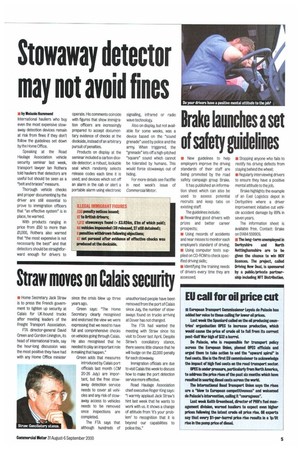Stowaway detector may not avoid fines
Page 7

If you've noticed an error in this article please click here to report it so we can fix it.
• by Melanie Helmond International hauliers who buy even the most expensive stowaway detection devices remain at risk from fines if they don't follow the guidelines set down by the Home Office.
Speaking at the Road Haulage Association vehicle security seminar last week, transport lawyer Ian Rothera told hauliers that detectors are useful but should be seen as a "belt and braces" measure.
Thorough vehicle checks and proper documenting by the driver are still essential to prove to immigration officers that "an effective system" is in place, he warned.
With products ranging in price from £50 to more than 11,000, Rothera also warned that "the most expensive is not necessarily the best" and that detectors should be straightforward enough for drivers to operate. His comments coincide with figures that show immigration officers are increasingly prepared to accept documentary evidence of checks at the dockside, instead of an arbitrary pursuit of penalties.
Products on display at the seminar included a carbon dioxide detector; a robust, lockable seal which randomly selects release codes each time it is used; and devices which set off an alarm in the cab or alert a portable alarm using electronic signalling, infrared or radio wave technology.
Also on display, but not available for some weeks, was a device based on the "sound grenade" used by police and the army. When triggered, the "grenade" lets off a high-pitched "square" sound which cannot be tolerated by humans. This would force stowaways out of hiding.
For more details see Factfile in next week's issue of Commercial Motor.












































































































